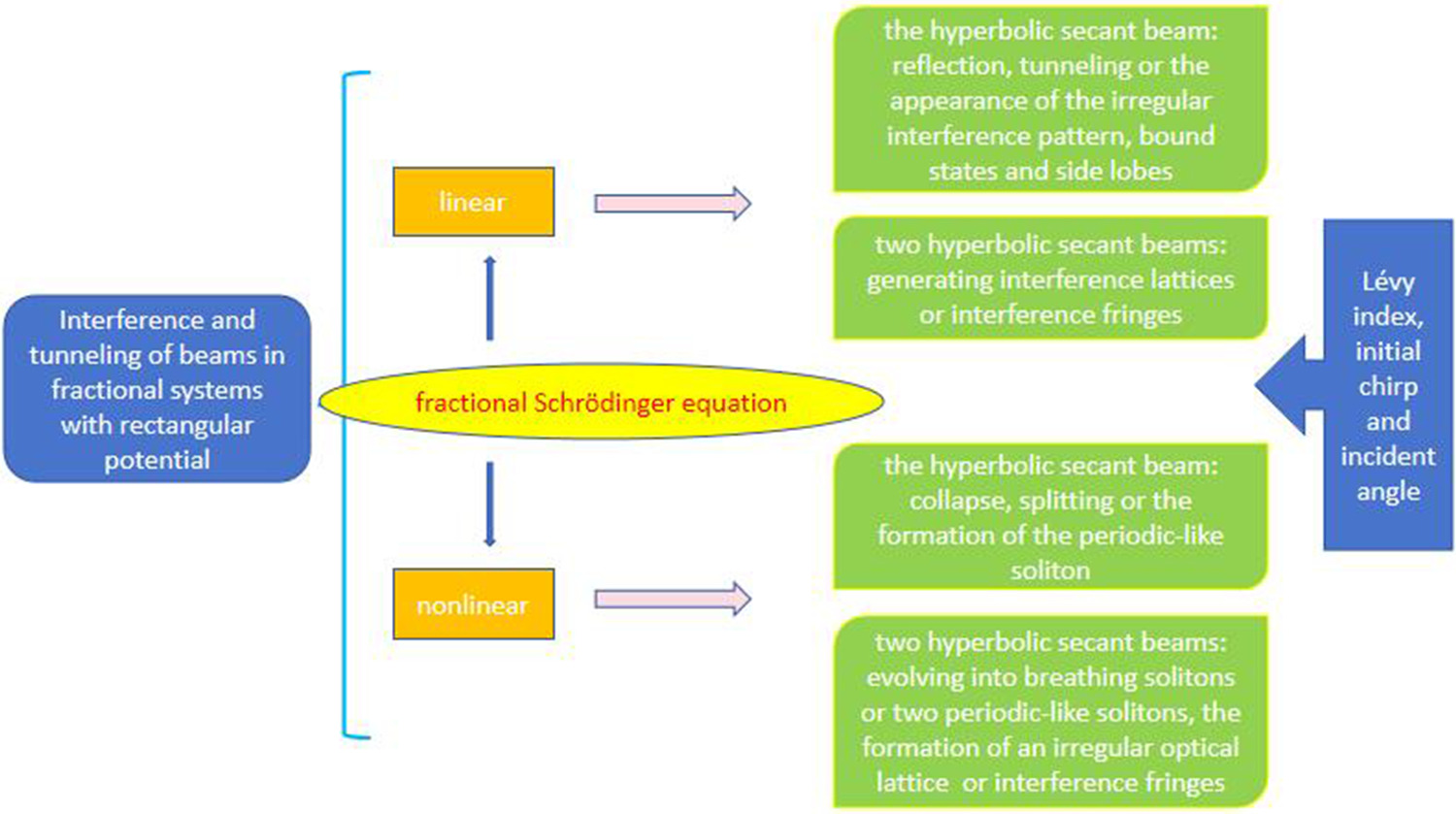https://doi.org/10.1140/epjd/s10053-024-00901-y
Regular Article – Optical Phenomena and Photonics
Interference and tunneling of beams in fractional systems with rectangular potential
1
School of Physics and Electronic Engineering, Shanxi University, 030006, Taiyuan, China
2
Collaborative Innovation Center of Extreme Optics, Shanxi University, 030006, Taiyuan, China
Received:
24
April
2024
Accepted:
31
July
2024
Published online:
10
August
2024
The dynamics of hyperbolic secant beams under the competition between the fractional diffraction and rectangular potential is investigated. It is found that the beams can exhibit the reflection, tunneling and interference, forming the bound states, optical lattices or fringes, or solitons under different conditions. In linear regime, when the potential is wide, the beam exhibits the total reflection for deeper potential and smaller incident angle, and presents the reflection and tunneling for shallower potential and larger incident angle. The irregular interference pattern and bound states are generated for the narrow potential. Moreover, the initial chirp causes the appearance of side lobes during beam propagation. When two hyperbolic secant beams are symmetrically incident from inside or outside the potential, the interference lattices or interference fringes are generated inside the potential, which are related to the Lévy index, initial chirp and incident angle of the beams. In nonlinear regime, the hyperbolic secant beam undergoes the collapse, splitting or formation of the periodic-like soliton by selecting appropriate parameters including the Lévy index, initial chirp and incident angle. In addition, the dynamics of two hyperbolic secant beams under the interaction of the nonlinear effect and fractional diffraction is also investigated in detail. This work provides more possibilities for optical lattice generation and optical manipulation.
Copyright comment Springer Nature or its licensor (e.g. a society or other partner) holds exclusive rights to this article under a publishing agreement with the author(s) or other rightsholder(s); author self-archiving of the accepted manuscript version of this article is solely governed by the terms of such publishing agreement and applicable law.
© The Author(s), under exclusive licence to EDP Sciences, SIF and Springer-Verlag GmbH Germany, part of Springer Nature 2024. Springer Nature or its licensor (e.g. a society or other partner) holds exclusive rights to this article under a publishing agreement with the author(s) or other rightsholder(s); author self-archiving of the accepted manuscript version of this article is solely governed by the terms of such publishing agreement and applicable law.





